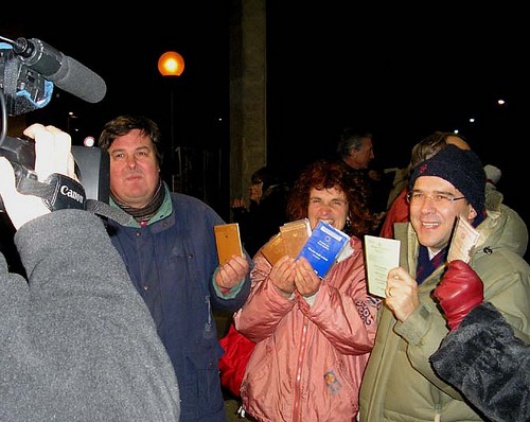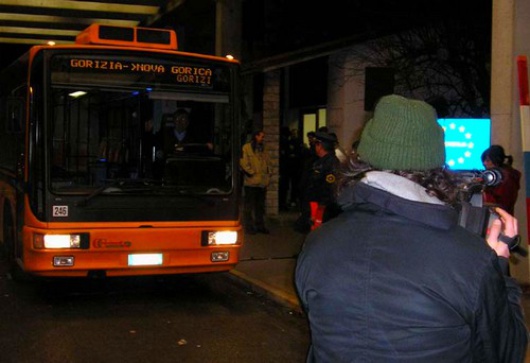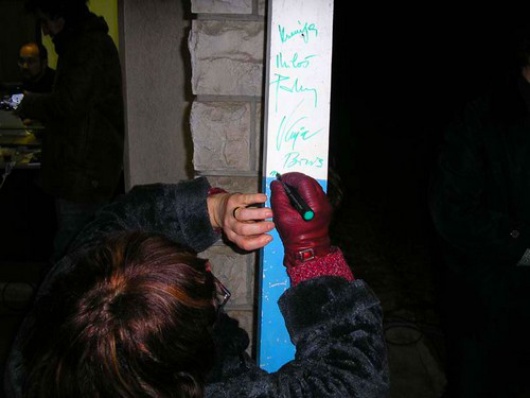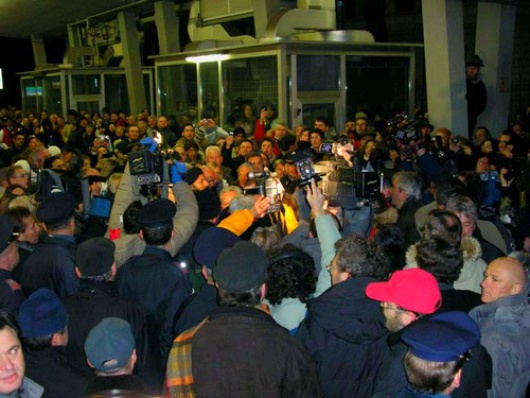Schengen: Slovenia and Italy help each other
Published on
Translation by:
Kate MartinWhen Slovenia became part of the Schengen zone on 21 December 2007, the 280km barrier separating it from Italy fell. It had been symbol of the iron curtain and the cold war that have divided Europe for decades
The city of Gorizia (or 'Friuli Venezia Giulia') celebrated the event just like Berlin in 1989 – celebrating its reunification. No barrier will ever again divide Gorizia and Nova Gorica ('Nuova Gorizia'), the Slovenian city created from parts of Gorizia in 1947 under Yugoslav communism.
 Thursday 20 December 2007, San Gabriele crossing, between Gorizia (Italy) and Nova Gorica (Slovenia) 8pm
Thursday 20 December 2007, San Gabriele crossing, between Gorizia (Italy) and Nova Gorica (Slovenia) 8pm
 Despite the cold, lots of Italians and Slovenians have spent the afternoon together in celebration of this historic event to the sound of toasts, music, smiles and hugs
Despite the cold, lots of Italians and Slovenians have spent the afternoon together in celebration of this historic event to the sound of toasts, music, smiles and hugs
Thursday 20 December, San Gabriele crossing, 8pm
 Slovenian and Italian citizens show their identity cards to local and national television cameras. A few minutes later, these allow them to pass through the last remaining border controls
Slovenian and Italian citizens show their identity cards to local and national television cameras. A few minutes later, these allow them to pass through the last remaining border controls
Thursday 20 December, San Gabriele crossing, about 8.30pm
 The Gorizia-Nova Gorica bus makes its journey as a symbol of the unification of the two cities
The Gorizia-Nova Gorica bus makes its journey as a symbol of the unification of the two cities
Thursday 20 December, San Gabriele crossing, 9pm
A woman signs the red, white and blue striped wooden barrier. These are colours from the time of Yugoslav communism and were removed before the clock struck midnight, even though border control was in operation until 12am
 Thursday 21 December, Casa Rossa international crossing, between Gorizia and Nova Gorica, 12am
Thursday 21 December, Casa Rossa international crossing, between Gorizia and Nova Gorica, 12am
Under the emotional gaze of hundreds of Italians and Slovenians, the mayors of Gorizia and Nova Gorizia, Ettore Romoli and Mirko Brulc, permanently raised the barrier that has been a symbol of the east-west divide for the last sixty years
Translated from Spazio Schengen: Slovenia e Italia si danno la mano



